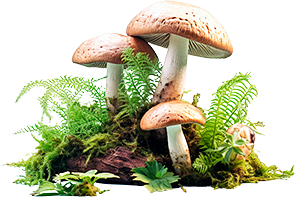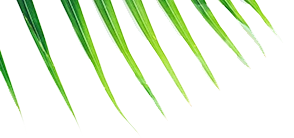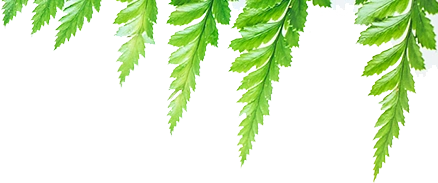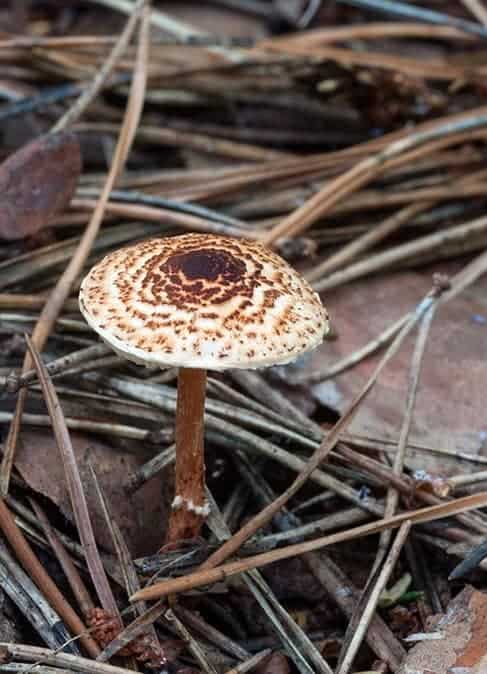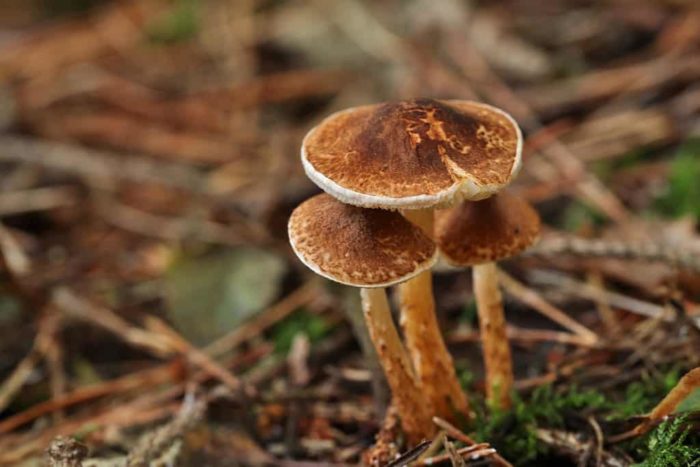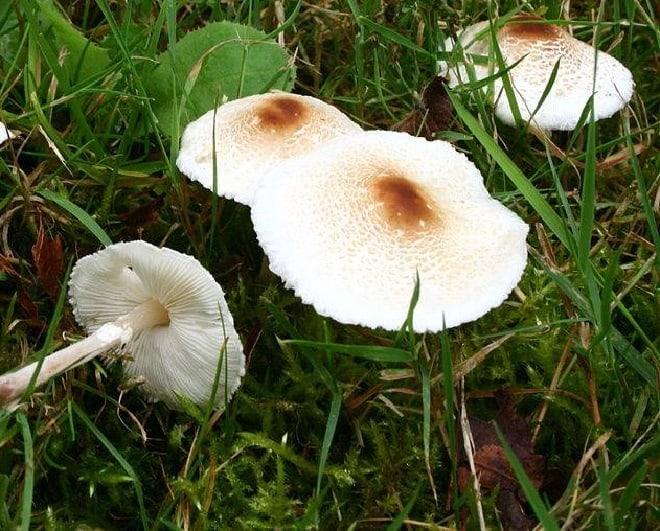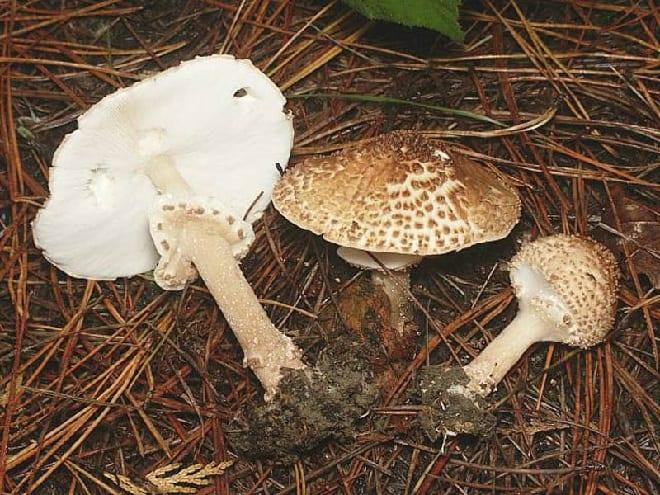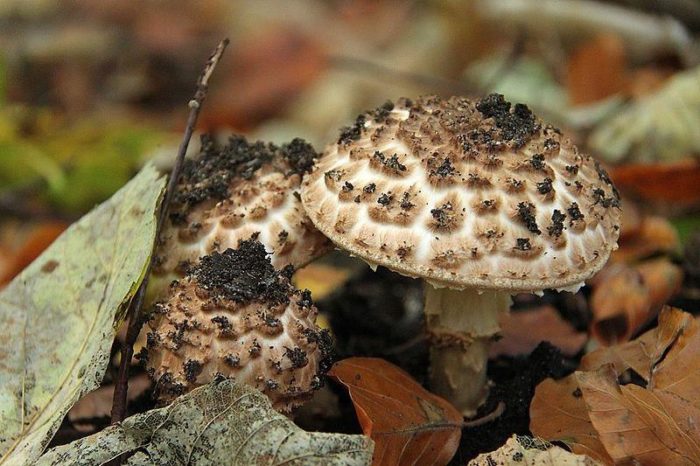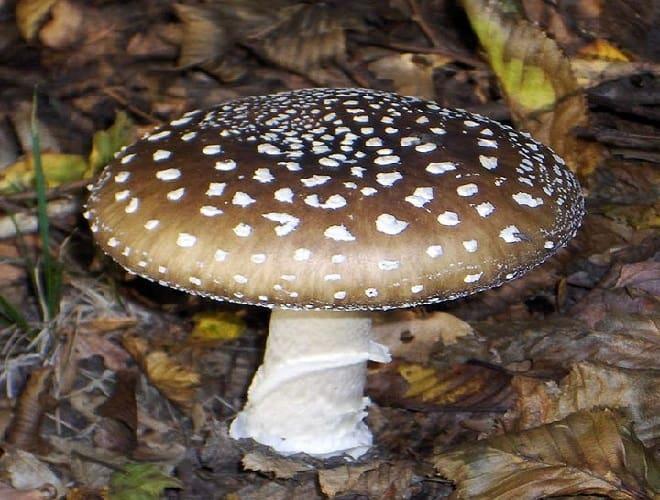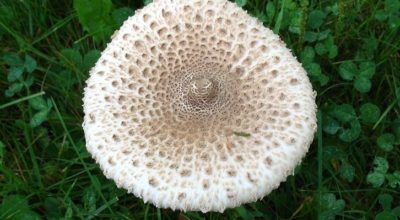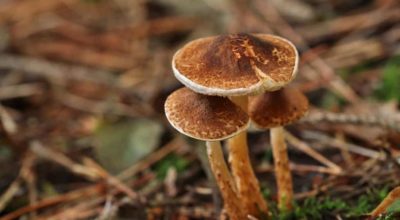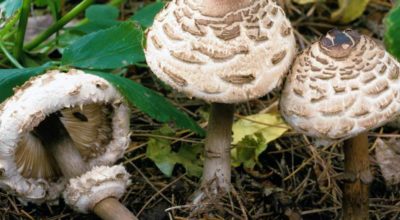To the family of champignon, Macrolepiot's genus is a lot of mushrooms, Including a false umbrella. Gathering the gifts of the forest, you need to know the differences of an edible umbrella from its doubles, which will help to avoid poisoning and enjoy a delicious product. The main feature of the representative of the family – mobile ring on the leg.
Content
- Why is the mushroom called an umbrella
- Edible mushrooms of parasol
- Poisonous umbrella mushrooms
- Chestnut
- Combus
- Rough
- How to distinguish an umbrella from double-ovate mushrooms
- Umbrella and fly agaric panther
- Umbrella and fly agaric
- Umbrella and chlorophyllum dark brown
- Umbrella and chlorophyllum lead
- The distribution area
Why is the mushroom called an umbrella
Edible mushrooms of parasol
Many umbrellas from the genus of macrophiotes not only have a pleasant taste, but are also considered a delicacy. All edible views, Photos of which transfers their similarity, grow from the beginning of summer until October - November. Most of them do not require preliminary boiling for cooking. They are fried like a chicken steak.
Poisonous umbrella mushrooms
Chestnut
The chestnut lepiot has a red or brown hat, the diameter of which does not exceed 4 cm. A chestnut mushroom hat at a young age has an egg-shaped shape, then takes the appearance of a prostrate dome. A small tubercle remains in the center. Gradually, the skin of the hat cracks, small scales are formed and brownish.
The chestnut umbrella is very poisonous, In most cases, the use of this product in food ends in death.
Combus
In young specimens, a wide captive ring is clearly visible, white or pink, But as it grows, it quickly disappears.
White mushroom pulp, has an unpleasant odor and taste.
Rough
Hat lepiots with a sheerekhovite can achieve 15 cm in diameter, bell -shaped shape. As they grow older, it becomes outstretched or convex, with a wide tubercle in the central part. The surface of the hat is very dry, resembles a felt. Color – from yellowish to light brown. The scales are darker, Pyramidal shape, Large.
Мякоть лепиоты шероховатой имеет неприятный, сильный смолистый запах и горький вкус. В пищу не употребляется.
How to distinguish an umbrella from double-ovate mushrooms
Съедобные грибы-зонтики имеют двойников не только в семействе Шампиньоновые, но и среди других. Таковыми являются отдельные виды мухоморов и хлорофиллумы, названия и фото которых можно найти в специализированной литературе.
Umbrella and fly agaric panther
Ножка гриба тонкая, белая или серо-грязная, в нижней части имеет клубневидное основание. Кольцо может отсутствовать. Мякоть мухомора, в отличие от краснеющего зонтика, только белая, не меняющая цвет при разломе. Обладает сладковатым неприятным запахом и вкусом.
Flying flywoman Panther серый можно встретить в северных регионах.
Зонтик и The fly agaric
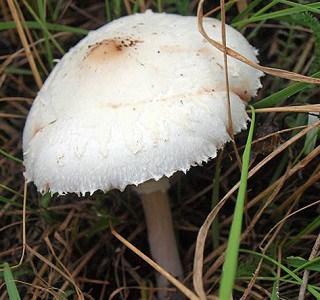
Поверхность покрыта хлопьями, в отличие от Макролепиота, у которого чешуйки образуются из-за растрескивания кожицы на шляпке. Color – чисто белый или сероватый, край шляпки может быть розоватого цвета.
Мякоть на разломе только белая, очень неприятно пахнущая. Макролепиоты же имеют слабый, но приятный аромат.
Umbrella and chlorophyllum dark brown
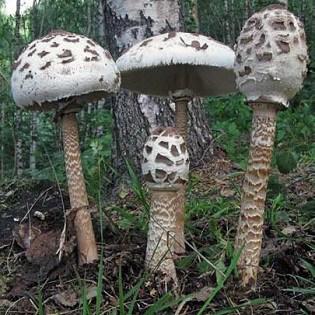
Umbrella and chlorophyllum lead
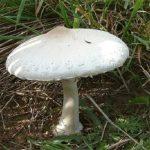
The distribution area
Растут грибы-зонтики по всему земному шару, в т. guide. и в России. Представителя рода можно увидеть в степи, на лугу или пастбище, в лиственном или смешанном лесу, в котором он будет чувствовать себя комфортно. Зонтик – это не очень редкий гриб. Они встречаются в парках и других насаждениях, где почва богата гумусом.
